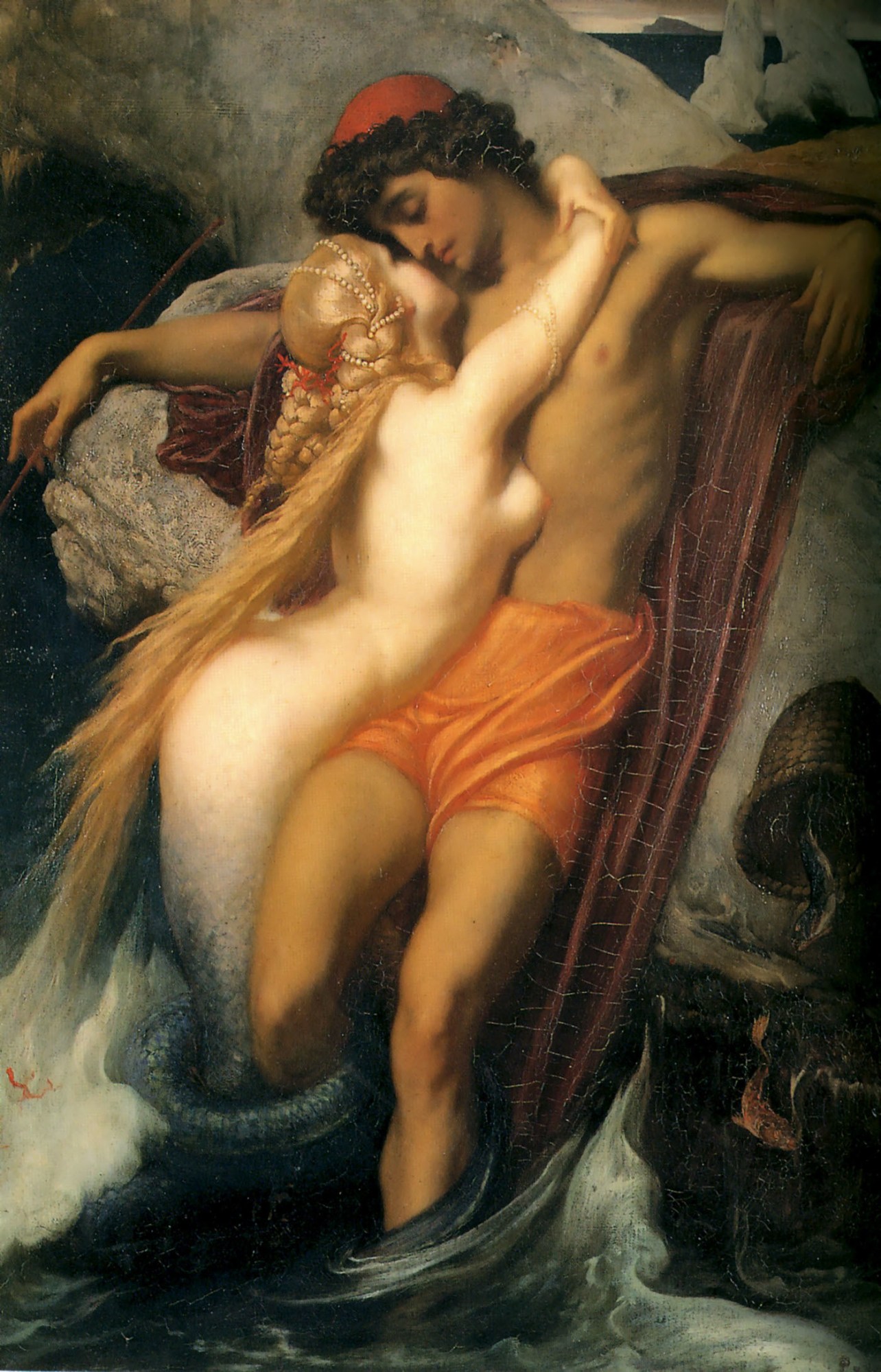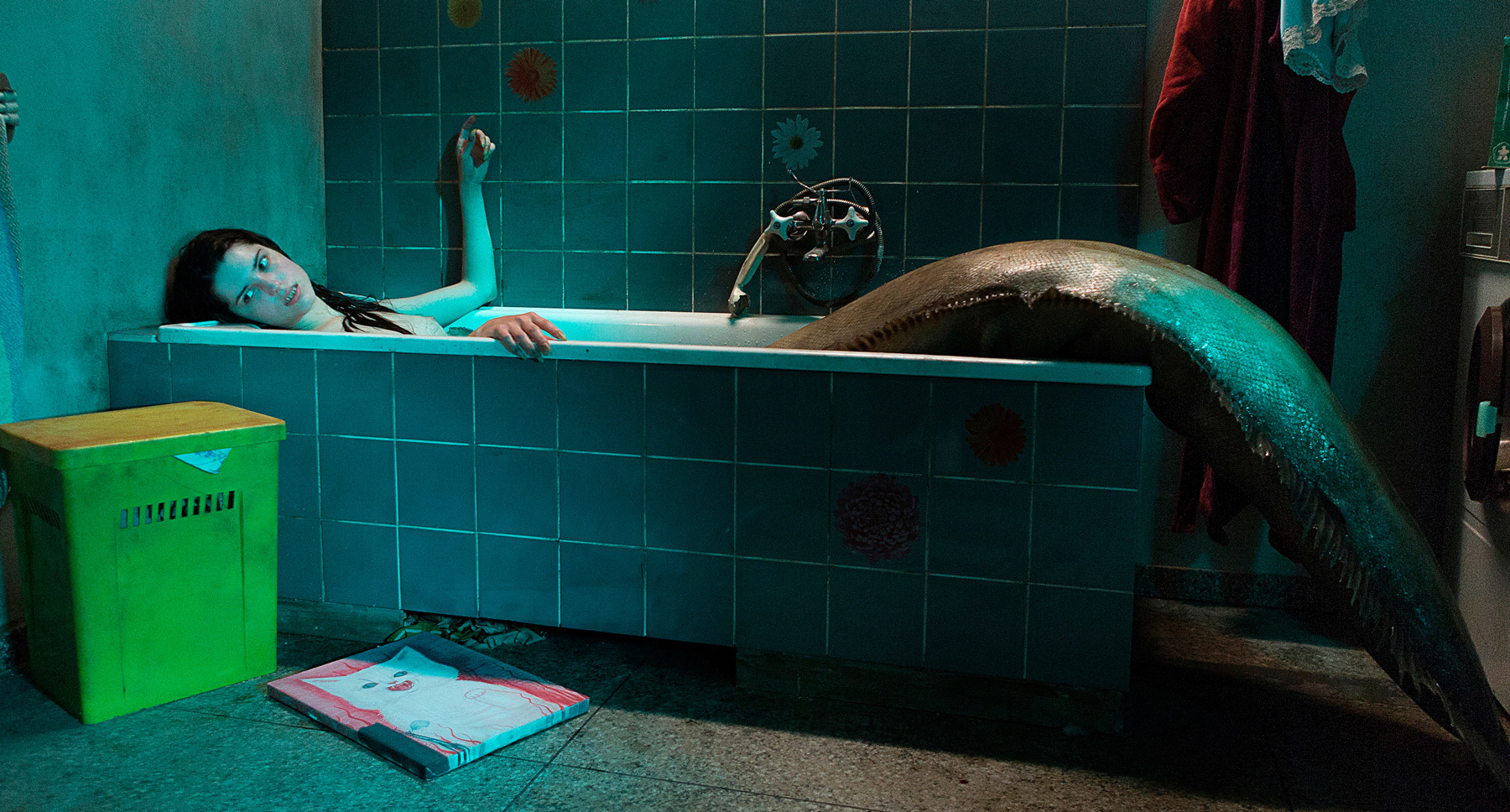Since their first mentions in ancient Assyrian folklore in 1000 B.C, mermaids have held a unique and textured place in cultural and creative consciousness. With mentions in Greek mythology, One Thousand and One Nights, and Nickelodeon kid’s shows, their shifting appeal as creatures of the dark and the light speak to the way we view sex, the sea, women and the gods. While many of the more recent headline grabbing mermaid stories have tended to focus on hair tutorials, multi-coloured food and drink and three forthcoming remakes of The Little Mermaid, there’s much more to it. Productions including Siren and The Lure suggest we’re still drawn to their more frightening potential; while the sweet cheese of Aquamarine and Lady Gaga’s turn as Yüyi show a more vulnerable side. The sea-water soaked creature reveal the sun and shadow of female stereotypes: one dangerous the other unbearably hopeless, existing to be destroyed.
Even without the feminist theory, it’s easy to understand why humans have always been drawn to mermaids: they’re beautiful, carefree, elegant, magical and get to spend a lot of time at the beach. But before they were Disney princesses, they were killers who led men astray and drove them mad. In British folklore mermaids were signs of bad luck, forewarning disasters. Classic artworks like Frederic Leighton’s 1858 painting The Fisherman and the Syren show them as beautiful waifs, who render the grown men in their grasp helpless. Slavic mythology told of water nymphs who would emerge from rivers during early June, make their way into towns and drag people back to their watery homes. No one was ever really safe, even when tucked up in their warm dry beds.

Hollywood offered a similar story in the 1961 film Night Tide, that saw a young Dennis Hopper fall in love with a beautiful new resident in his seaside town who played a mermaid in the local carnival. Soon, his feelings are punctured by the creeping sense she really was a mermaid who also killed people during full moons. While Night Tide may have used sea people as a stand in for the usual schlocky, B-movie villains, the example of mermaids as evil, deranged and powerful is seductive. We’ve always been drawn to the dangerous woman trope: someone who tempts good men away from the security of the familiar.
These beings, always young, usually naked, achingly free from any societal or family restraints don’t only look like adolescent girls, they hint at how powerful young women can be. Looking to land, it’s a conversation we’re seeing echoed more broadly across the media as teenage girls are shown to be so much more than romantic, vulnerable beings. What better embodiment of the growing understanding over the capabilities and force of teens than to have an adolescent fairytale creature rip someone’s throat out, in a film like The Lure?
There’s another facet mermaid myth, although it’s considerably less empowering. If history’s earliest mermaids were ferocious, in the 19th century, they became much more tragic. No where is this more apparent than in Hans Christian Andersen’s famous story of the Little Mermaid. For anyone only familiar with the animation, let’s catch you up.
In the original story, the little mermaid traded her voice for legs — which caused her to feel like she was always walking on knives — so she could take to land and be with the man she loved. There was a catch though: if he didn’t love her back she will die of a broken heart and dissolve into sea foam. Spoiler alert — complications ensue, and he doesn’t fall for her. She’s given one alternative option: if she kills the prince she can return to her previous sea-life. After considering it, she realises that despite the rejection, she could never harm him.
The haunting image of a broken young woman, who did everything right, followed the rules, believed in love and was still punished — that’s familiar to us all. The lonely martyr can be tracked from Joan of Arc through to Barb from Stranger Things. Interestingly, it’s this example that has since proved a crowd favourite, with all three of the upcoming remakes appearing to follow this formula.
Funny Or Die’s take on what Sofia Coppola’s Little Mermaid could have been.
Congolomerate Media and Kingsway Productions’ forthcoming interpretation of the story spins together familiar subjects: a girl is separated from her family, mistreated by a man, and ultimately punished for the sweetness that apparently makes her so special. Universal’s hyped, although now shaky, adaptation is light on details but the fact both Sofia Coppola and Joe Wright have been attached to it suggest a melancholy direction Anderson would approve of. Finally, Disney’s live action remake will bring Lin-Manuel Miranda together with legendary composer Alan Menken. It probably won’t have as much teenage self-sacrifice, but is riffing off a version that presented the same image of an impossibly pure and vulnerable child.
The symbol of a woman so consumed by goodness and love she is ultimately destroyed by the people around her does initially appear to celebrate a far more passive vision of femininity. But it shouldn’t be dismissed altogether. While the violent mermaid speaks to the power of women, the gentle one warns of the way our good girl expectations cripple us. Both are in some ways horror stories, not for the wrecked ships and men that spill out in their wake, but as examples of the dangerous paths we lay out for women in life and fiction. The mermaid who stands up for herself is a ghoul, the one who is passive is a victim, and neither are guaranteed a happy ending.
Credits
Text Wendy Syfret
